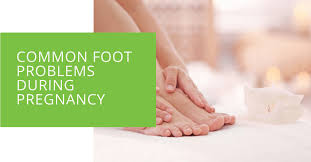Discover effective remedies and management techniques for swollen feet. From lifestyle changes to medical treatments, learn how to alleviate discomfort and enhance your foot health today.

Introduction
Swollen feet, or pedal edema, is a common condition characterized by the accumulation of fluid in the feet and ankles. This can result from various factors, including prolonged standing or sitting, medical conditions, injuries, and certain lifestyle choices. Understanding the causes and symptoms is the first step towards finding relief. This article explores practical strategies for managing swollen feet, ensuring you can walk more comfortably and improve your overall quality of life.
Table of Contents
Causes of Swollen Feet

Prolonged Standing/Sitting: Gravity causes fluid to pool in the feet and legs.
Overweight and Obesity: Extra body weight increases pressure on the feet.
Aging: Reduced circulation can cause swelling in older adults.
Pregnancy: During pregnancy, the body undergoes significant changes that can lead to swollen feet. The increase in fluid and changes in blood chemistry are necessary to support fetal development but can cause fluid retention in the lower limbs. Additionally, the growing uterus can put pressure on the veins in the pelvis, further impeding blood flow back to the heart from the legs. While mild swelling is normal, sudden or severe swelling might indicate preeclampsia, a serious condition requiring immediate medical attention.
Injury: Injuries such as sprains, fractures, or strains in the foot or ankle lead to inflammation and swelling as part of the body’s natural healing process. The swelling is due to an increase in fluid and blood components in the tissue surrounding the injury, which helps to protect and repair the damaged area.
Lymphedema: A blockage in the lymphatic system can cause swelling in the feet and legs.
Medications: Some medications can contribute to swollen feet as a side effect by altering the body’s balance of fluids and electrolytes or affecting blood circulation. Medications that can cause swelling include:
- Antidepressants: Such as tricyclics and MAO inhibitors, can lead to fluid retention.
- Blood Pressure Medications: Calcium channel blockers, in particular, can cause swelling in the feet and ankles.
- Steroids: Both systemic and local steroids can promote fluid retention.
- Non-Steroidal Anti-Inflammatory Drugs (NSAIDs): Can lead to fluid retention in some individuals.
- Diabetes Medications: Some medications used to treat diabetes may also cause swelling.
If you suspect that your medication is causing swelling, it’s important not to stop taking it abruptly but to consult with your healthcare provider for possible adjustments or alternatives.
Symptoms of Swollen Feet
Recognizing Swollen Feet symptoms are crucial for determining the need for medical evaluation or intervention. Here are the primary symptoms associated with swollen feet:
| Increased Size of Feet: One of the most noticeable signs is an apparent increase in the size or width of your feet, which can make your shoes feel tighter. |
| Puffiness: The affected area, typically around the ankles and the top of the foot, appears puffy or bloated. |
| Stretched or Shiny Skin: The skin over the swollen area may look stretched, shiny, or thinner than usual. |
| Skin that Retains a Dimple (Pitting Edema): When you press on the swollen area for a few seconds and then remove your finger, an indentation or dimple may remain on the skin. |
| Discomfort or Pain: Swelling can lead to discomfort, tenderness, or pain in the feet, especially when standing, walking, or applying pressure. |
| Reduced Mobility: Swelling in the feet can restrict the range of motion in your joints, making it difficult to walk or move your feet normally. |
| Changes in Skin Color: The skin over the swollen area may change color, becoming redder, paler, or even taking on a bluish tint, depending on the underlying cause. |
| Warmth or Heat: The swollen area may feel warmer to the touch compared to other parts of the body. |
| Weight Gain: In some cases, rapid weight gain can accompany swelling, especially if it’s related to fluid retention. |
Treatment and Management of Swollen Feet
Lifestyle Changes and Home Remedies
Elevation
How it Helps: Elevating your feet above heart level helps improve circulation and encourages fluid to flow away from your feet and ankles, reducing swelling.
Practical Tips: When lying down, use pillows or cushions to prop up your legs. Aim for elevation several times a day, especially after long periods of standing or sitting.
Exercise
How it Helps: Regular exercise stimulates blood circulation throughout the body, including the legs and feet. This can help prevent blood from pooling in the lower extremities and reduce swelling.
Practical Tips: Incorporate low-impact exercises like walking, swimming, or cycling into your daily routine. Even simple ankle rotation exercises can improve circulation if you’re unable to engage in more strenuous activities.
Compression Stockings
How it Helps: Compression stockings apply gentle pressure to your legs and ankles, promoting better blood flow and preventing the accumulation of fluid.
Practical Tips: Choose compression stockings with the right level of compression for your needs. They should be snug but not painfully tight. It’s often best to put them on in the morning before swelling starts.
Reduce Salt Intake
How it Helps: Salt can cause the body to retain water, exacerbating swelling. Reducing salt intake helps prevent water retention.

Practical Tips: Limit processed and packaged foods, which are often high in sodium. Use herbs and spices to flavor food instead of salt.
Stay Hydrated
How it Helps: Drinking water helps flush toxins from your body and reduces water retention. Surprisingly, staying well-hydrated can actually reduce swelling.

Practical Tips: Aim for 8-10 glasses of water a day, more if you’re active or it’s hot. Limit caffeine and alcohol, which can dehydrate you.
Proper Footwear
How it Helps: Shoes that fit well and offer proper support can reduce pressure on your feet and help prevent swelling.

Practical Tips: Choose shoes with a comfortable fit, good arch support, and a cushioned sole. Avoid shoes with straps or anything that digs into your skin.
Weight Management
How it Helps: Excess weight increases the pressure on your feet and legs, contributing to swelling. Losing weight can significantly reduce this pressure.

Practical Tips: Adopt a healthy diet and regular exercise routine. Consider consulting a dietitian or a fitness expert for personalized advice.
Avoid Prolonged Standing or Sitting
How it Helps: Staying in one position for too long can impair circulation, leading to swelling. Moving around helps stimulate blood flow.

Practical Tips: Take short breaks every hour to walk around if you have a desk job. If standing for long periods, shift your weight and move your legs frequently.
Cool Compresses
How it Helps: Cold therapy can reduce inflammation and constrict blood vessels, which can help reduce swelling temporarily.

Practical Tips: Wrap ice packs or cool compresses in a cloth to avoid direct skin contact. Apply to swollen areas for 15-20 minutes several times a day.
Medical Treatments
Medications
Diuretics: Also known as water pills, diuretics work by increasing the amount of salt and water expelled from the body as urine. This can reduce the fluid in your circulatory system, thereby decreasing swelling. It’s crucial to use these under the guidance of a healthcare provider because they can affect electrolyte balance and kidney function.

Other Medications: Depending on the underlying cause of the swelling, doctors may prescribe medications to treat those specific conditions. For example, if swelling is due to heart disease, medications that improve heart function may indirectly reduce swelling.
Manage Underlying Conditions
Chronic Disease Management: Conditions like diabetes, heart disease, and kidney disease can lead to fluid retention and swelling if not properly managed. Regular monitoring and treatment of these conditions can mitigate swelling. This might include medication, dietary changes, and regular check-ups to monitor the condition’s progression.
Lifestyle Adjustments: In conjunction with medical treatment, lifestyle changes such as diet modification, exercise, and quitting smoking can significantly impact the management of chronic conditions.
Physical Therapy
Circulation Improvement: Physical therapists can design exercise programs tailored to improve blood and lymph circulation in the legs, helping to reduce swelling. These might include stretching, strengthening, and aerobic exercises.
Manual Therapy: Techniques such as massage and lymphatic drainage can help move fluid out of the swollen area, reducing swelling.
Education: Physical therapists can also educate patients on self-management strategies, including exercises that can be done at home, the use of compression garments, and the importance of regular movement.
Surgery
Correcting Structural Problems: In cases where swollen feet are caused by structural issues like a blockage in the lymphatic system or venous insufficiency, surgery may be required. Procedures can vary from minimally invasive interventions to more complex surgeries, depending on the severity and nature of the blockage.
Venous Insufficiency Surgery: This might include stripping or ablating (removing or closing) varicose veins, thereby improving blood flow and reducing swelling.
Lymphatic System Surgery: For severe lymphedema, procedures to remove excess fluid or reconstruct parts of the lymphatic system may be considered.
When to See a Doctor
- Persistent Swelling: If swelling does not improve with home remedies or if it worsens, it’s important to seek medical advice.
- Accompanied Symptoms: Swelling accompanied by symptoms like pain, redness, or warmth could indicate an infection or clot and requires immediate medical attention.
- Underlying Health Conditions: Individuals with known heart, kidney, or liver disease experiencing increased swelling should consult their healthcare provider, as this may indicate a worsening of their condition.
Managing swollen feet often involves addressing the underlying cause, lifestyle modifications, and home remedies. However, it’s important to consult a healthcare professional for a proper diagnosis and treatment plan, especially if the swelling is sudden, severe, or accompanied by other concerning symptoms.
FAQ Section
Q: What are the main causes of swollen feet? A: Swollen feet can be caused by prolonged standing or sitting, being overweight, aging, pregnancy, injuries, lymphedema, and certain medications.
Q: How can I quickly reduce swelling in my feet at home? A: Elevating your feet, exercising regularly, wearing compression stockings, reducing salt intake, staying hydrated, and using cool compresses are effective home remedies.
Q: When should I see a doctor for swollen feet? A: Consult a healthcare professional if the swelling persists, worsens, is accompanied by pain, redness, or warmth, or if you have known heart, kidney, or liver disease.
Q: Can swollen feet be prevented? A: While not all cases can be prevented, maintaining a healthy weight, staying active, avoiding prolonged periods of standing or sitting, and managing underlying health conditions can help reduce the risk.
Conclusion
Managing swollen feet often involves a combination of home remedies, lifestyle adjustments, and medical interventions. By understanding the underlying causes and implementing the strategies outlined in this article, you can significantly alleviate discomfort and prevent future occurrences. Remember, while many cases of swollen feet can be treated at home, it’s important to seek medical advice for persistent or severe swelling, especially if accompanied by other concerning symptoms. Prioritizing your foot health is essential for maintaining mobility and enhancing your overall well-being.










Your article helped me a lot, is there any more related content? Thanks!